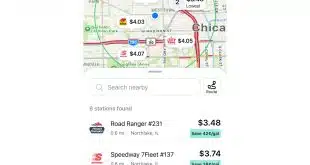Visa Inc. will lower its merchant dispute and fraud ratios in October. Merchants that exceed the revised ratios could be placed in monitoring programs meant to control risk.
Visa hasn’t announced the new standards publicly, but has informed the merchant-acquiring community. Digital Transactions News obtained some of the key new threshold standards from chargeback and fraud-prevention service providers.
Visa’s Chargeback Monitoring Program has two major components. Lower-risk merchants currently are placed in the program if they have 100 or more disputed transactions per month and a dispute to transactions ratio of 1%. The new standard effective Oct. 1 retains the threshold at 100 disputes, but lowers the ratio to 0.9%.
The current standard for higher risk merchants is 1,000 or more disputed transactions monthly and a 2% dispute to transactions ratio. In October, the ratio will be reduced to 1.8%, though the 1,000 dispute count will remain.
Similar changes are coming to Visa’s Fraud Monitoring Program. Merchants currently are placed in the standard part of that program if they have $75,000 or more in fraudulent transactions in a month and a fraud to sales volume ratio of 1%. The revision will keep the $75,000 threshold but lower the fraud to sales volume ratio to 0.9%.
The so-called excessive part of the fraud program currently kicks in at $250,000 per month in fraudulent transactions and a fraud to sales volume ratio to 2%. The $250,000 threshold will be retained come October, but the fraud to sales volume ratio will be lowered to 1.8%.

“The thresholds they created, the 1%, were created about 10 years ago, and they have not actually updated the thresholds,” Dakshina tells Digital Transactions News. “But now the fraud aspect has become more sophisticated.”
Since then, new technologies and programs have come onto the scene to reduce fraud and chargebacks. They include version 2 of the 3-D Secure online fraud-prevention system and Visa Merchant Purchase Inquiry, a chargeback-prevention service that debuted in April 2018 and includes a platform for merchants to communicate transaction information directly to issuers, Dakshina says.
Dakshina predicts the merchants to be most affected by the changes will be those in the entertainment, travel, and subscription-services industries.
Merchants placed in the chargeback-monitoring program generally have three months to clean up their acts, or at least present a plan for doing so, according to Dakshina. Once a plan is created, they may get another three to six months to get into compliance. “If they are not able to control it, their merchant account is eliminated,” says Dakshina.
Acquirers, too, will be facing stricter thresholds for their merchants’ chargebacks and fraud volumes. Visa has reduced both the acquirer fraud to sales ratio and the dispute to transaction ratio thresholds from 1% to 0.75%, according to Midigator LLC, a chargeback-prevention services provider based in American Fork, Utah.
“Visa is not willing to accept as much merchant risk as they previously did,” says a Midigator blog post. “Merchants may be penalized for unsuccessful risk-management strategies—and so will acquirers.”




